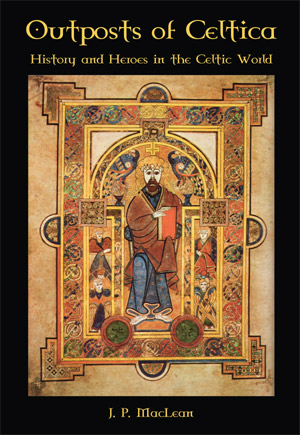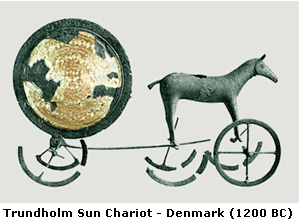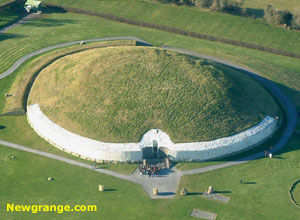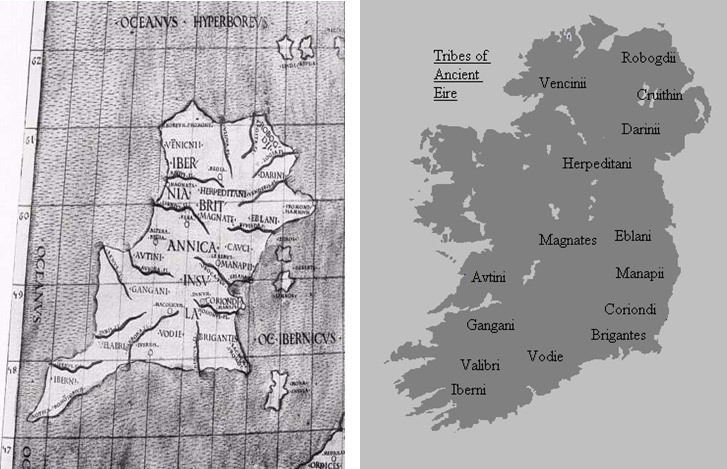Outposts of Celtica
 History and Heroes of the Celtic World by J.P. MacLean.
History and Heroes of the Celtic World by J.P. MacLean.
The surviving Celtic world of today, though vibrant and engaging in itself, is only a remnant of the culture that once dominated most of Europe and parts of Asia. From the Anatolian plains in present day Turkey to the Highlands of Scotland, the tribal Celts reigned supreme across this vast expanse for over four hundred years.
The cities that the Celts founded and once called their own, include Ankara in Turkey, Belgrade in Serbia and Milan in Italy.
Heroes of the Celtic world include Brennus who once held Rome to ransom, Queen Boudicca who in defence of her tribe decimated London, and William Wallace (Braveheart) who defeated an Anglo army twice the size of his spirited battalion.
During the Dark Age of Europe, the monasteries of Celtica were a beacon of light and a source of knowledge and learning in a world that seemed to be in regression.
This book explores pieces of Celtic history from its birthplace in central Europe, to the surviving outposts in western Europe and on into the Americas — to such places as the Patagonia region of Argentina and the Cape Breton region of eastern Canada — outposts that still resist absorption into the larger generic culture of the modern world.
Purchase Outposts of Celtica
The Celtic World of Albion
Ireland (Hibernia) - An excerpt from Chapter 2.Circa AD 400, Ireland was firmly Celtic and would remain so for centuries to come. There would be various kingdoms within Ireland that would rise and fall, various tribes that would dominate vast lands across the island and there would be tribal excursions into Britannia where Irish Celtic communities would arise. There were periods in time when excursions into Britannia were not so friendly, when the Irish would raid and plunder Britannia and the maritime lands of Europe not unlike the Norse raids into Ireland in later years. There were periods in time when trade and commerce with other tribes and other lands including those of Rome were not uncommon.
Although there is much history surrounding the lands that would become known as Ireland, the history was within the confine of a Celtic world. The Romans would never hold any sway in Ireland, though they believed they could. The dominant influences that would eventually lead to cultural change in Ireland were the growth and expansion of the Anglo-Saxons and Normans and – just as significantly – the evolution of the Christian church in Ireland led by the inspired missionaries who would see the conversion of most of the population.
Historical accounts of the pre-Roman Celtic world in Northern Ireland and the west highlands and islands of Scotland are cloudy because much of the documentation that does exist was written centuries after the times of the actual occurrences referenced. Coupled with this issue is the frequent situation that in existing documentation, there is a seamless blend of truth and legend making it difficult to ascertain one from the other. There were some external references to the lands of Hibernia by Greek and Roman historians. Later the Christian missionaries would record history. There was always a bias however that reflected the desire or objectives of the authors; so early history remains an approximation.
An important and interesting source that provides a pseudo-historical view of Ireland is various medieval writings and manuscripts that together form four distinct periods or cycles of Irish history and mythology. The most of these manuscripts were penned in the 11th and 12th century AD, but much of the writing dates back as early as the sixth century. The manuscripts are compiled under four main – albeit loosely followed – themes: the Mythological Cycle which references early pre-Christian history, the Ulster Cycle that references the time of the beginning of the Christian era, the Fenian Cycle which concerns itself with heroes from around the third century AD and the Historical Cycle (also known as Cycle of the Kings) which outlines the hierarchy of Kings of Ireland dating back to the fifth century BC.
Some scholars believe the documents are of historical significance; others feel they are of little relevance historically. Most have extracted some truth from the mythology and fiction as there is sufficient evidence to suggest that the references to many of the tribes, kings, battles and places of importance, are of some relevance. Just as important as their historical reference value, is that they provide a taste of the cultural world of the time period in which they were written.
The Greek historian Ptolemy produced a map referencing Ireland circa AD 100 detailing the resident tribes of the time. The map is one of few early external historical references providing some detail as to the homes of various tribes in the region. Interestingly, the Cruithin in the north, who also resided in Scotland, were considered to be a Pictish tribe by some historians. Their appearance as a noted tribe in Ireland would indicate that assimilation of the various tribal entities had commenced most likely at a much earlier period in time.
The Druids
 Cult of the Sun - An excerpt from Chapter 3.
Cult of the Sun - An excerpt from Chapter 3.
There is evidence dating back to 1200 BC in northern and central Europe that there was an organized priesthood associated with worship of the sun. Many artifacts found in differing locations across these areas have motifs clearly pointing to reverence directed at solar worship. These artifacts include long conical golden hats decorated with wheels and concentric circles, which many historians believe alluded to the sun.
The best preserved of these artifacts includes a 37 inch golden cone that had been uncovered in Bavaria and is entirely engraved with row after row of varying image patterns most likely in reference to variations of the sun.
Other items include the Trundholm sun chariot found in Denmark. The disk being carried in this chariot is gilded on one side only, the right-hand side (relative to the horse). This has been interpreted as an indication of a belief that the sun is drawn across the heavens from east to west during the day, presenting its bright side to the Earth and returns from west to east during the night, when the dark side is being presented to the Earth.
Also related to the sun and older than these artifacts are some of the passage tombs found throughout the British Isles and western Europe. In Ireland, dating back to circa 3200 BC, are megalithic passage tombs such as those in the eastern county of Meath located at Newgrange, Knowth, Dowth and Loughcrew as well as other sites. These magnificent edifices were called passage tombs because it was believed that here the souls of the dead would pass from this world to the next; the deceased, sometimes cremated and sometimes not, were placed in these tombs for what was planned to be an eternity.
 What
is fascinating about these tombs – in addition to their megalithic size and
intricate design – is their astronomical alignment in relation to the sun.
In the case of the Newgrange passage tomb, the main passage and
chamber are illuminated by the winter solstice sunrise.
A shaft of sunlight shines through the roof box over the entrance and pierces through the passage to
light up the interior chamber. This dramatic event lasts for about 17 minutes at dawn from the 19th to the 23rd of December only.
What
is fascinating about these tombs – in addition to their megalithic size and
intricate design – is their astronomical alignment in relation to the sun.
In the case of the Newgrange passage tomb, the main passage and
chamber are illuminated by the winter solstice sunrise.
A shaft of sunlight shines through the roof box over the entrance and pierces through the passage to
light up the interior chamber. This dramatic event lasts for about 17 minutes at dawn from the 19th to the 23rd of December only.
The passage tomb at Dowth (which is also known through Irish mythology as the Fairy Mound of Darkness) is of similar size to the tomb at Newgrange, but rather than alignment to the winter solstice sunrise, this tomb is aligned to the winter solstice sunset.
In the megalithic cairns located at Loughcrew, Cairn T was constructed to align with the spring and fall equinox. A beam of light illuminates the back stone of the chamber inside the Cairn, at sunrise on the spring and autumn equinoxes. The sunlight is shaped by the stones of the entrance and passageway and with the light finding its way to the back stone while moving from left to right illuminating a number of solar symbols.
Clearly, the builders of such edifices had a comprehensive knowledge of astronomy as well as grounded abilities in engineering that would have allowed the construction of such megaliths. It is possible and probable that the ancestors of the Celtic people of Europe were in large part descendants of these Neolithic indigenous races of people. It is also probable that through the cultural evolution that eventually produced the Celtic tribes and their Druid wise men, this ancient knowledge of ritual and rite and science and engineering were, at least in part, carried forward.
Boyne Valley Private Day Tour
 Immerse yourself in the rich heritage and culture of the Boyne Valley with our full-day private tours.
Visit Newgrange World Heritage site, explore the Hill of Slane, where Saint Patrick famously lit the Paschal fire.
Discover the Hill of Tara, the ancient seat of power for the High Kings of Ireland.
Book Now
Immerse yourself in the rich heritage and culture of the Boyne Valley with our full-day private tours.
Visit Newgrange World Heritage site, explore the Hill of Slane, where Saint Patrick famously lit the Paschal fire.
Discover the Hill of Tara, the ancient seat of power for the High Kings of Ireland.
Book Now
Home
| Visitor Centre
| Tours
| Winter Solstice
| Solstice Lottery
| Images
| Local Area
| News
| Knowth
| Dowth
| Articles
| Art
| Books
| Directions
| Accommodation
| Contact

